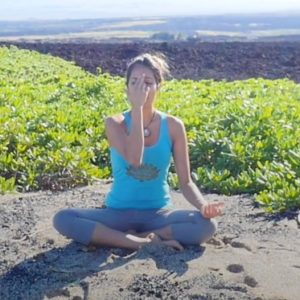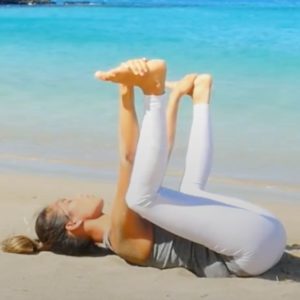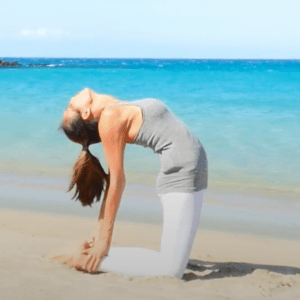Two poses for today are Cobra and Corpse Poses
Cobra and Corpse Poses
Cobra and Corpse Poses help reduce blood pressure, anxiety, and insomnia, and reduce the Vata dosha. Try these poses with Guided Yoga from YouVeda.
Cobra Pose
This asana resembles a serpent with its hood raised.
Steps
- Lie on your stomach with your toes flat on the floor and forehead resting on the ground.
- Keep your legs close together, with your feet and heels lightly touching each other.
- Place your hands (palms downwards) under your shoulders, keeping your elbows parallel and close to your torso.
- Taking a deep breath in, slowly lift your head, chest, and abdomen while keeping your navel on the floor.
- Pull your torso back and off the floor with the support of your hands.
- Checkpoint: Are you putting equal pressure on both the palms?
- Keep breathing with awareness, as you curve your spine vertebra by vertebra. If possible, straighten your arms by arching your back as much as possible; tilt your head back and lookup.
- Checkpoint: Are your shoulders away from your ears? Keep your shoulders relaxed, even if it means bending your elbows. With regular practice, you will be able to deepen the stretch by straightening the elbows.
- Ensure that your feet are still close together. Keep smiling and breathing. Smiling Cobras!
- Don’t overdo the stretch or overstrain yourself.
- Breathing out, gently bring your abdomen, chest, and head back to the floor.
Benefits of the Cobra Pose
- Opens up the shoulders and neck.
- Tones the abdomen.
- Strengthens the entire back and shoulders.
- Improves flexibility of the upper and middle back.
- Expands the chest.
- Improves blood circulation.
- Reduces fatigue and stress.
- Useful for people with respiratory disorders such as asthma. (Do not practice this yoga pose during the attack though).
Corpse Yoga Pose – Savasana
This pose gets its name from the recumbent posture of a dead body. It is a position of rest, and is usually practiced towards the end of a yoga session – a session that typically begins with activity and ends in rest; space or pause when deep healing can take place.
Steps – Savasana
- Lie flat on your back, preferably without any props or cushions. Use a small pillow below your neck if required. Close your eyes.
- Keep your legs comfortable apart and let your feet and knees relax completely, toes facing to the sides.
- Place your arms alongside, yet a little spread apart from your body.
- Leave your palms open, facing upward.
- Taking your attention to different body parts one by one, slowly relax your entire body.
- Begin with bringing your awareness to the right foot, move on to the right knee (as you complete one leg, move your attention on to the other leg), and so on, and slowly move upwards to your head, relaxing each part of the body.
- Keep breathing slowly, gently, deeply, and allow your breath to relax you more and more. The incoming breath energizes the body while the outgoing breath brings relaxation. Drop all sense of hurry or urgency or any need to attend to anything else. Just be with the body and the breath.
- Surrender the whole body to the floor and let go. Make sure you don’t fall asleep!
- After some time, about 10-20minutes when you feel fully relaxed, keeping your eyes closed, slowly roll onto your right side. Lie in that position for a minute or so. Then, taking the support of your right hand, gently sit up into a seated pose such as Sukhasana (Easy Pose).
- Keep your eyes closed and take a few deep breaths in and out as you gradually become aware of your environment and the body. When you feel complete, slowly, and gently open your eyes.
Benefits of the Corpse Pose – Savasana
- This posture brings a deep, meditative state of rest, which may help in the repair of tissues and cells, and in releasing stress. It also gives time for the yoga workout to sink in at a deeper level.
- This posture leaves you in a state of rejuvenation. It is the perfect way to end a yoga session, particularly if it has been a fast-paced one.
- It helps reduce blood pressure, anxiety, and insomnia.
- This is an excellent way to ground the body and reduce the Vata dosha(imbalance of the air element) in the body.




